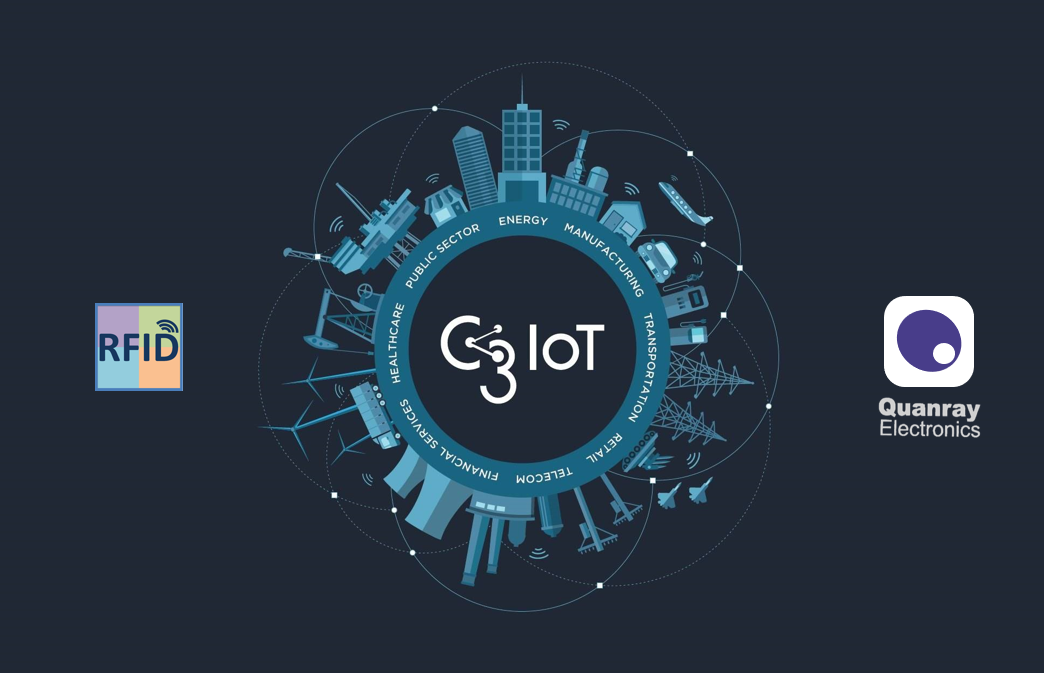Quanray Electronics' "Passive IoT Nodes and Chip Key Technologies and Industrialization" project, based on the company's years of professional strength in the field of RFID chips, won the 2019 review by the Ministry of Industry and Information Technology in the competition among many companies. The key technology and platform innovation of the Internet of Things, integrated innovation and integrated application projects. Quanray Electronics has a domestic first-class RFID chip design team and leading testing and verification environment and equipment, which provides strong support for the research and development of the project. The Internet of Things is an important part of the country's strategic emerging industries, and it is also an industry under the national key planning and support during the 13th Five-Year Plan. At present, RFID is penetrating into many areas of society, and has an important impact on improving people's quality of life, improving corporate efficiency, and strengthening public safety. Quanray Electronics will work hand in hand to contribute its own strength in the process of China's Internet of Things.

The Internet of Things involves the entire process of information acquisition, transmission, storage, processing, and application. RFID technology is an important core technology for information acquisition. With its automatic identification, safety and reliability, and dynamic tracking characteristics, it is used in the fields of storage, transportation and intelligent monitoring. The application of the RFID tag is increasingly strengthened, and the low-voltage, low-power temperature sensor technology integrated in the RFID tag chip has received more research and attention. Traditional temperature and humidity sensing circuits cannot be applied to passive electronic signs because they require higher operating voltage, higher power consumption, and A/D conversion time. Although many solutions have been improved in the industry, they are not very perfect. In actual RFID applications, many solutions have to sacrifice the sensitivity of the tag chip, reduce the reading distance of the tag, or reduce the reading efficiency of the tag. This project mainly addresses the above shortcomings and the requirements for high-precision, ultra-low power consumption, high reliability, and wide-range sensor nodes in the Internet of Things. It focuses on the core goals of achieving analog-to-digital signal conversion, power and data bidirectional transmission with sensors , Independently research and develop patent-protected passive IoT sensor chips and related supporting technologies, and form a complete IP library and patent group in project development.

This product adopts international protocols for one-way and two-way transmission of sensor data, and at the same time powers the sensor through the energy acquisition of signal carriers in different frequency bands, thus completely getting rid of the sensor's dependence on batteries. Quanray independently developed a high-precision and low-power analog-to-digital converter, which can convert a variety of sensor output signals from analog to digital, and can achieve up to 12-bit accuracy under extremely low power consumption. In the future, the chip will have multiple digital interfaces at the same time to facilitate data interaction with mainstream off-chip sensors. The chip will be able to support large-span temperature operation, meet the requirements of industrial-grade sensor use conditions, and support power assist mode to further increase the communication distance. Quanray passive IoT sensor chips can be used with various types of RFID read-write devices to collect relevant data. In the future, they can be widely used in medical, food, pharmaceutical, animal husbandry, power, railway, industrial manufacturing and other industries.

Currently, 60% of the current staff of Shanghai Quanray Electronic Technology Co., Ltd. are R&D personnel. Its R&D team has outstanding technical expertise and experience in RFID chip design, testing and quality control, readers, RF antennas, software and systems, integrated circuit development and management, etc., and it can be said to be one of the best RFID teams in China One. Quanray took the lead in designing the first domestic UHF electronic tag chip QR2233 that complies with the EPC C1G2 protocol in 2008, making Quanray the fourth in the world and the first in Asia through chip compatibility and tag interoperability. For dual-certified manufacturers, the chip can be used in many fields such as fast-moving consumer goods, logistics and supply chain management, and anti-counterfeiting nationwide.




























 点击咨询
点击咨询 021-68795432
021-68795432


 沪公网安备 31011502003477号
沪公网安备 31011502003477号